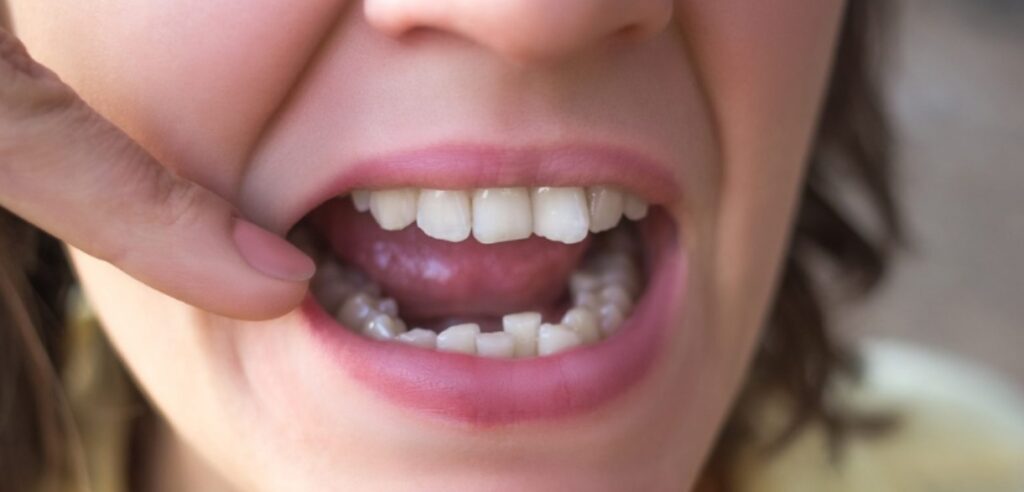Crooked teeth are more than just a cosmetic concern—they can also affect your bite, oral hygiene, and confidence. If you’ve ever felt self-conscious about your smile or noticed that your bottom teeth are crooked, you’re not alone. Many people seek orthodontic treatments each year to achieve perfectly aligned teeth and a healthier smile.
One of the most common questions people have is: How long does it take to straighten crooked teeth? The answer depends on several factors, including the severity of the misalignment, the treatment method, and your age. Let’s take a closer look at what influences treatment time and what options are available to help you achieve a straighter, more confident smile.
What Causes Crooked Teeth?
Before exploring how long it takes to fix crooked teeth, it’s helpful to understand why they occur in the first place. Teeth can become crooked due to various factors, such as:
- Genetics – If your parents or siblings had misaligned teeth, you may have inherited similar dental traits.
- Early tooth loss – Losing baby teeth too soon can cause neighbouring teeth to shift and crowd.
- Jaw size and structure – Modern diets with softer foods can lead to smaller jaws, leaving less room for teeth to align properly.
- Habits – Thumb-sucking, prolonged pacifier use, or tongue thrusting during childhood can cause crooked lower teeth or upper teeth misalignment.
- Injury or trauma – Accidents can cause teeth to move out of place or grow improperly.
Whether you have very crooked teeth or just crooked teeth at the bottom, the good news is that modern orthodontic treatments can correct most alignment issues efficiently.
How Long Does It Take to Straighten Crooked Teeth?
The average time to straighten crooked teeth ranges from 6 months to 2 years, depending on the treatment and the extent of misalignment. Mild cases—like slightly crooked bottom teeth—may take less than a year, while severe crowding or bite issues might take longer.
Here’s a breakdown based on common treatment types:
1. Traditional Metal Braces (18–24 months)
Traditional braces remain one of the most effective solutions for complex cases and very crooked teeth. They use metal brackets and wires to gradually move teeth into the correct position.
- Treatment Time: Usually between 18 to 24 months, though minor corrections can be completed in 12 months or less.
- Best for: Severe misalignment, bite correction, and rotating teeth.
While metal braces require regular adjustments, they are reliable and suitable for both teens and adults.
2. Ceramic Braces (12–24 months)
Ceramic braces work just like traditional braces but are made of clear or tooth-coloured materials.
- Treatment Time: Around 12 to 24 months.
- Best for: Patients looking for a less noticeable alternative to metal braces.
They’re effective but slightly more fragile, which may increase treatment time if brackets break or need replacement.
3. Clear Aligners (6–18 months)
Clear aligners, such as Invisalign, have become increasingly popular among Canadians seeking a discreet, comfortable way to straighten their teeth. These removable trays are custom-made to fit your mouth and gently shift teeth over time.
- Treatment Time: As short as 6 months for mild cases and up to 18 months for moderate misalignment.
- Best for: Mild to moderate crooked teeth, spacing issues, and crooked bottom teeth.
Patients love aligners because they’re nearly invisible and easy to maintain, making them a great choice for adults seeking a flexible treatment option.
Also read:A Complete Guide to Tooth Decay and How to Prevent It
4. Lingual Braces (18–36 months)
Lingual braces are placed on the back (tongue side) of your teeth, making them invisible from the front.
- Treatment Time: 18 to 36 months, depending on the severity of the misalignment.
- Best for: Individuals who want completely hidden braces but are willing to wait for a longer adjustment period.
Although effective, lingual braces can initially affect speech and may take longer for very complex cases.
5. Retainers for Minor Adjustments (3–9 months)
If you have slightly crooked teeth at the bottom or a single tooth that’s out of place, your dentist might recommend a retainer-only treatment.
- Treatment Time: 3-9 months.
- Best for: Minor shifting or relapse after previous orthodontic treatment.
What Affects the Time Needed to Straighten Teeth?
The duration of your treatment depends on several personal and clinical factors:
- Severity of Misalignment – The more misaligned your teeth or bite, the longer the treatment time.
- Age – Teenagers’ teeth often move faster because their jaws are still developing, while adult teeth can take a little longer to adjust.
- Type of Treatment – Some treatments, like aligners, work faster for mild issues, while braces are better for complex alignment.
- Patient Compliance – With clear aligners, wearing them at least 20–22 hours daily is crucial. Skipping days can delay progress.
- Bone Density and Oral Health – Healthy gums and jawbones help teeth move more predictably.
Every smile is unique, so your dentist or orthodontist will personalize your treatment plan after examining your teeth, bite, and jaw alignment.
Can You Get Straight Teeth Naturally?
Many people wonder how to get straight teeth naturally or if home remedies can help. Unfortunately, there’s no scientifically proven way to naturally fix crooked teeth. Once adult teeth are set in the jaw, they can only be repositioned using professional orthodontic methods.
That said, you can support your treatment and prevent worsening alignment by:
- Avoiding habits like nail-biting or tongue thrusting.
- Maintaining good oral hygiene to support healthy gums.
- Visiting your dentist regularly for cleanings and check-ups.
If you’re researching how to fix a crooked tooth or seeking how to get straight teeth naturally, remember: professional guidance ensures safe and predictable results. Trying DIY aligners or “at-home braces” can cause permanent damage to your teeth and bite.
What Happens After Straightening Your Teeth?
Once your treatment is complete, you’ll need to wear a retainer to maintain your results. Retainers help your teeth stay in their new positions while the surrounding bone and tissues stabilize.
- Fixed retainers stay behind your teeth permanently.
- Removable retainers are worn mostly at night.
Skipping your retainer can cause your crooked lower teeth to shift back over time—so consistent use is essential for keeping your smile beautifully aligned.
Benefits of Having Straight Teeth
Investing time in orthodontic treatment is worth it for the long-term benefits. Straight teeth can help you:
- Improve oral hygiene: Easier to brush and floss, reducing the risk of cavities and gum disease.
- Enhance appearance: A confident smile can boost your self-esteem and social interactions.
- Corrects bite issues: Reduces tooth wear and strain on jaw muscles.
- Promote better overall health: Good oral health is linked to heart and digestive health.
A healthy, perfectly aligned smile doesn’t just look good—it supports your well-being for years to come.
Also read: 7 Types of Periodontal Disease You Should Know About
Final Thoughts
So, how long does it take to straighten crooked teeth? While most treatments range from 6 months to 2 years, the exact duration depends on your dental condition and the type of orthodontic solution you choose.
Whether you have crooked bottom teeth, very crooked teeth, or are simply aiming for perfectly aligned teeth, modern dental technology offers safe and effective ways to achieve your goal. Consult with our dentist to discuss your options and get a personalized estimate for your smile transformation.




